Home / Degrees / Healthcare / Master of Science in Nursing - Family Nurse Practitioner / Explore MSN FNP
Questions to Consider: The MSN Family Nurse Practitioner Degree

If you’re ready to take your nursing practice to the next level, becoming a family nurse practitioner (FNP) might be the right choice for you. By providing preventive treatment and disease management to diverse populations, board-certified FNPs are a valuable resource. They are advanced clinicians who play an active and mostly independent role in patient care.
FNPs enjoy almost as many privileges and responsibilities as medical doctors, and they’re filling the gap in primary care. In the midst of a growing shortage of generalist physicians, the role of nurse practitioner is one of the fastest growing occupations in healthcare. In fact, it’s one of the fastest growing occupations across all industries in the United States.
A master of science in nursing (MSN) is the first step to FNP certification. With an online MSN – family nurse practitioner program, you’ll maintain your current employment, customize your schedule and complete clinical hours at a site of your choosing. Follow the links below to learn about specific elements of the program.
What Is an MSN – FNP Degree?
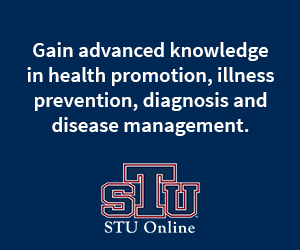
The MSN – FNP prepares you to become a board-certified family nurse practitioner. The degree imparts advanced knowledge in health promotion, illness prevention, diagnosis and disease management. You’ll develop strategies for treating individuals, families and communities as you move through the degree program. Standard courses are centered on knowledge acquisition through reading, writing, research and discussion. Clinical courses offer hands-on experience. Through this two-pronged approach to learning, you’ll hone your skills as a primary care provider.
Online programs, like the MSN – FNP at St. Thomas University, are designed for working nurses. Even nurses with split shifts and on-call schedules can take advantage of the online format. That’s because courses are accessible 24/7.
How Do I Become a Nurse Practitioner?
After you’ve earned a bachelor’s degree in nursing and passed the NCLEX-RN exam, you’ll want to gain a couple of years of experience as an RN before taking the next step, which is to earn a graduate degree. A master’s degree is typically required for nurse practitioners – the American Association of Nurse Practitioners notes that 99.1% of all NPs have graduate degrees. After completing an MSN FNP or similar program, nurses then take the national board certification exam and apply for state NP licensure. The majority of NPs are primary care, with 72% of those NPs specializing in family care, according to an AANP infographic.
If you’re an RN, but do not yet have a BSN, you can take the next step toward becoming a nurse practitioner with an online RN to BSN program.
Of all nurse practitioners have a graduate degree
– American Association of Nurse Practitioners
Why Should I Become a Family Nurse Practitioner?

Aside from expanding your knowledge and advancing your practice, becoming an FNP offers greater professional autonomy, and it allows you to make a significant impact on patient outcomes. You’ll gain experience working with a range of patients and health conditions, establish a foundation for preventive care, and oversee the diagnosis and treatment of chronic and acute disease.
Working as an FNP is highly fulfilling, and it’s a great career move. You’ll enjoy rapid job growth, low unemployment rates and rising salaries:
- The U.S. Bureau of Labor Statistics ranks nurse practitioners as the ninth fastest growing occupation in the country, with a projected 26% rise in employment between 2018 and 2028.
- U.S. News & World Report notes that the unemployment rate for nurse practitioners is 1.1%.
- According to the American Association of Nurse Practitioners (AANP), salaries for FNPs rose 18% between 2015 and 2017.
What Will I Learn in an Online MSN Family Nurse Practitioner Program?
Online or on campus, MSN – FNP programs cover advanced clinical and diagnostic skills in primary care medicine. In order to provide high-quality and culturally appropriate care across diverse settings and populations, you’ll learn to:
- Incorporate evidence-based research into preventive, chronic and acute care
- Advocate for policies that improve care systems and health outcomes
- Apply nursing informatics to enhance and streamline patient care
- Coordinate care delivery across interprofessional teams
- Integrate clinical treatment with health promotion strategies
Ultimately, you’ll learn everything you need to pass your board certification exam and begin your new role as a successful FNP.
Which Courses Will I Take?
MSN – FNP programs expand on your current knowledge in health assessment, pharmacology and pathophysiology. Core courses also build your expertise in evidence-based research, healthcare policy and disease prevention. From there, many FNPs-in-training will complete specialization courses across the spectrum of primary care. Clinical hours are built into your courses or completed separately. It varies by program.
At STU, specialization courses are split into didactic and clinical modes. Each mode runs simultaneously over a period of seven weeks, allowing you to implement your newfound knowledge with hands-on practice. Paired classes are conveniently arranged by patient population: Children & Families, Women’s Health, Adults, and Adult Gerontology. Next, students at STU address health promotion, disease prevention and clinical management through their capstone course, Advanced Practice Nursing Integration.
What Are the Requirements for Admission to an MSN – FNP Program?
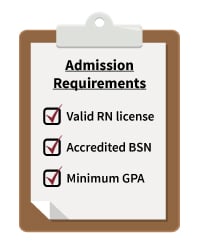
While admission policies are set by each university and program, there are several common themes. First, you’ll need a valid, unencumbered RN license and a BSN from an accredited nursing school. Your cumulative GPA will have to meet minimum requirements as well. After that, some MSN – FNP programs may request one or more of the following: letters of recommendation, GRE scores, a personal statement, and one to two years of clinical experience.
STU’s requirements for admission are simple. Aside from your nursing license and a BSN from an accredited program, all you need is a cumulative 3.0 GPA. The program is open to all RNs living and working in Florida and Georgia.
Is Institutional Accreditation Important?
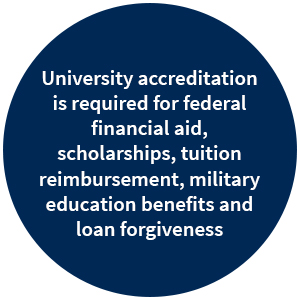
It’s very important. Institutional accreditation ensures that your university is ethically and fiscally responsible. It also ensures positive academic outcomes and consistent graduation rates. University accreditation is required for federal financial aid, scholarships, tuition reimbursement, military education benefits and loan forgiveness programs. Since most universities won’t recognize unaccredited degrees, your opportunities for continuing education are also limited.
STU is accredited by the Southern Association of Colleges and Schools Commission on Colleges (SACSCOC). You can confirm university and program status through the U.S. Department of Education’s searchable Database of Accredited Postsecondary Institutions and Programs (DAPIP).
What’s the Difference Between Institutional Accreditation and Programmatic Accreditation?
While institutional accreditation confirms the quality of your university, programmatic accreditation guarantees the quality of your degree program. For nurses, your program should be accredited by the Commission on Collegiate Nursing Education (CCNE) or the Accreditation Commission for Education in Nursing (ACEN). CCNE- and ACEN-approved programs meet professional and industry standards.
The MSN – FNP program at St. Thomas University is CCNE accredited. When you graduate, you’ll be prepared for professional certification.
How Are FNPs Certified?
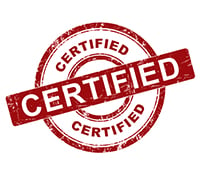
There are two options for FNP licensing, and accredited programs should prepare you for both. The American Academy of Nurse Practitioners (AANP) and American Nurses Credentialing Center (ANCC) offer slightly different exams. Outlines and study guides are widely available, so you can select the format that works best for you.
Since AANP and ANCC certifications are nationally recognized, it doesn’t really matter which exam you choose. As soon as you pass, you can practice as a licensed FNP throughout the United States.
How Many Clinical Rotations Will I Complete for My FNP Degree?
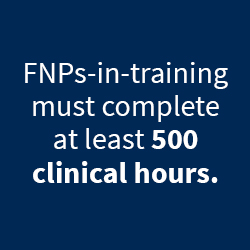
Per the National Task Force on Quality Nurse Practitioner Education, FNPs-in-training must complete a minimum of 500 clinical hours. Beyond that, your rotations are largely between you, your program and your preceptor. Some nursing schools require 600 to 700 clinical hours, some build clinicals into the coursework, and some leave the format more open-ended.
STU’s online MSN – FNP program requires 500 clinical hours. Your time is divided equally between seven-week rotations in child and family care, women’s health, adult health, and gerontology.
How Do Clinicals Work in an Online Nurse Practitioner Program?

As an online student, you’ll choose your preceptors and select a clinical site that’s convenient for you. FNPs maintain a versatile practice, so you have plenty of options. The following settings are available for nurse practitioner clinicals:
- Family Practice Medical Clinic
- Internal Medicine Outpatient Clinic
- Retail Clinic
- Pediatric Clinic
- Women’s Health Clinic
- Community Health Center
- Urgent Care Clinic (non-Emergency Room)
Some universities will assist with site selection as well. If you run into any obstacles during your search, STU can connect you with a university-partnered alternative. Florida is a big state, though, and affiliates may be up to 100 miles from your location. You should confirm your options with STU before requesting an assignment.
What’s the Process for Preceptor Selection?

Finding a clinical preceptor is an essential component to your success as an FNP-in-training. Rotations are designed to expand your knowledge and skillset, so you’ll work outside your unit with a preceptor who isn’t your direct supervisor. Many MSN – FNP programs also require you to work under the supervision of nurse practitioners with at least two years of experience.
That’s the case at St. Thomas University. You also have the option to work with an M.D. or D.O. in primary care for one of your rotations. Remaining criteria are as follows:
- Preceptors must hold an unencumbered license to practice in Florida.
- Nurse practitioners must be board certified by the ANCC or AANP.
- Women’s health nurse practitioners, however, may be certified by the National Certification Corporation (NCC).
What’s My Scope of Practice as a Family Nurse Practitioner?
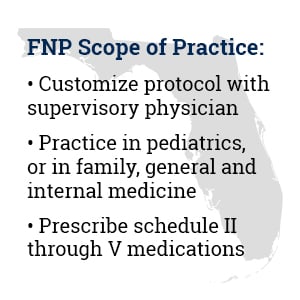
While certification is nationally administered, scope of practice varies by state. In Florida, FNPs maintain a supervisory relationship with a physician. Terms are negotiated between both parties, mutually agreed upon, and formalized in a written protocol. Depending on your protocol, you can prescribe medication, including controlled substances (schedule II through V). Ultimately, you’re authorized to practice in family medicine, general medicine, internal medicine and pediatrics.
You can find additional details through the AANP and the Scope of Practice Policy project. Both sites maintain a state-by-state breakdown, but if you decide to work in a U.S. Veterans Health Administration facility, you won’t need to review state guidelines. That’s because nurse practitioners in the VA are granted full practice authority. They can operate without a supervising physician to evaluate patients, order and interpret diagnostic tests, create and manage treatment, and prescribe medications.
How Are Nurse Practitioners Different from Physician Assistants?
Both physician assistants (PAs) and nurse practitioners are master’s-prepared, board-certified healthcare professionals, and both fill the gap in primary care. According to the U.S. Bureau of Labor Statistics, their job growth and salary are pretty similar as well. Yet, the American Academy of PAs reports that physician assistants must complete 2,000 clinical hours for certification (twice as many as NPs). They must complete 100 hours of continuing medical education every two years and take their certification exam every 10 years. While nurse practitioners re-certify every five years, they can do so with continuing education credits. Another difference worth noting: PAs attend medical school, and their practice is disease centered. Nurse practitioners attend nursing school. Their practice is patient centered.
How Much Does an FNP Make?
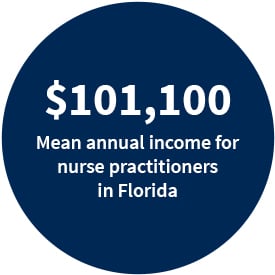
FNPs’ salaries reflect their depth of expertise, and most nurse practitioners make between $90,760 and $125,440 a year.
The U.S. Bureau of Labor Statistics (BLS) reports earnings by state and metropolitan area. Nurse practitioners in Florida enjoy a mean annual income $101,100. Nationally, median wages are $113,930, but Florida has a relatively low cost of living and no state income tax. These factors are pretty significant. As NerdWallet‘s cost of living calculator reveals, a salary of $113,930 in Los Angeles is equivalent to a salary of $88,862 in Miami. Luckily, nurse practitioners in Miami, Fort Lauderdale and West Palm Beach earn around $103,840. Check out the list below for a sampling of nurse practitioner incomes throughout Florida, all calculated by the BLS:
- Tampa, St. Petersburg, Clearwater: $94,250
- Orlando, Kissimmee, Sanford: $96,350
- Gainesville: $96,970
- North Florida Nonmetropolitan Area: $99,070
- North Port, Sarasota, Bradenton: $103,440
- South Florida Nonmetropolitan Area: $103,920
- Sebring: $106,050
- Panama City: $106,570
- Port St. Lucie: $112,760
- Palm Bay, Melbourne, Titusville: $141,800
Where Do FNPs Work?

Generally speaking, FNPs work wherever there’s a need for primary care. You might treat patients in a hospital, clinic, outpatient facility or physician’s office. Should you decide to focus on public health initiatives, you could find yourself in a nonprofit or government office.
If you’re curious about what kinds of organizations are looking for family nurse practitioners, you may want to review the following roster of top FNP employers throughout Florida. The list was compiled by Burning Glass Technologies. It’s based on an analysis of over 3,000 job postings, all made between June 2018 and July 2019:
- United Health Group
- Baptist Health
- S. Air Force
- MHM Services
- CVS Health
- Adventist Health
- Mayo Foundation
- Orlando Regional Healthcare
- U.S. Department of Veterans Affairs
- Moffitt Cancer Center
- Tenet Health System
- Hospital Corporation of America
- Anthem Blue Cross
- State of Florida
Are Family Nurse Practitioners in Demand?
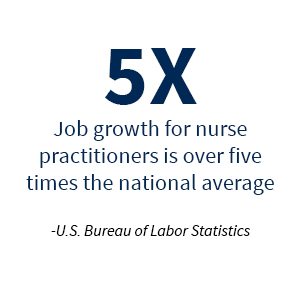
Family nurse practitioners are in high demand. Job growth for nurse practitioners is over five times the national average. The BLS also predicts that over 62,000 new NP jobs will be created between 2018 and 2028. That number doesn’t include the existing positions vacated by retiring nurse practitioners. As the need for NPs in primary care grows, family nurse practitioners can expect a wealth of employment options. It’s no wonder the American Association of Nurse Practitioners (AANP) reports that 87% of new NPs are trained in primary care.
More patients are turning to FNPs for care, and the AANP states that there were 1.06 billion patient visits to nurse practitioners in 2018. Retail clinics make a significant contribution to this trend. The New York Times notes that there are 12,000 retail clinics operating in America, and the Robert Wood Johnson Foundation asserts that nurse practitioners play a key role in this model. That’s because retail clinics employ nurse practitioners to increase access to primary care, and they’re doing so in the wake of a growing physician shortage. In fact, where most retail clinics accept walk-ins and same-day appointments, patients in traditional care settings often wait weeks for an appointment with their family physician.
Of new nurse practitioners are trained in primary care
– American Association of Nurse Practitioners
What’s the Career Outlook for FNPs in Florida?
While projected job growth between 2018 and 2028 is 26% for nurse practitioners, this BLS forecast considers the entire country. Projections in Florida are significantly higher. Both Burning Glass and the BLS list Florida in the top five states for nurse practitioner employment. As Burning Glass Technologies reports, nurse practitioners in the state can expect a 45% rise in employment between 2019 and 2028.
Spotlight on the Primary Care Shortage: FNPs Fill the Gap
 Predictions for the primary care shortage are well documented. According to the State-Level Projections of Supply and Demand for Primary Care Practitioners Through 2030), Florida will need an additional 3,060 full-time primary care physicians by 2025. That’s the largest predicted deficit in the country, and Texas is a distant second at 1,760. A more recent report issued by the Florida Department of Health in 2017 points to an even more significant shortfall. Of the 15,362 primary care physicians practicing in Florida, over 60% are approaching retirement. That’s an impending loss of over 9,000 doctors in internal medicine, family medicine and pediatrics. Nationally, the HRSA forecasts a deficit of 20,400 physicians by 2020, but the Association of American Medical Colleges notes, “By 2032, demand for physicians will exceed supply by a range of 46,900 to 121,900 full-time-equivalent physicians.” Both reports assert that nurse practitioners will step forward to fill the gap.
Predictions for the primary care shortage are well documented. According to the State-Level Projections of Supply and Demand for Primary Care Practitioners Through 2030), Florida will need an additional 3,060 full-time primary care physicians by 2025. That’s the largest predicted deficit in the country, and Texas is a distant second at 1,760. A more recent report issued by the Florida Department of Health in 2017 points to an even more significant shortfall. Of the 15,362 primary care physicians practicing in Florida, over 60% are approaching retirement. That’s an impending loss of over 9,000 doctors in internal medicine, family medicine and pediatrics. Nationally, the HRSA forecasts a deficit of 20,400 physicians by 2020, but the Association of American Medical Colleges notes, “By 2032, demand for physicians will exceed supply by a range of 46,900 to 121,900 full-time-equivalent physicians.” Both reports assert that nurse practitioners will step forward to fill the gap.
And they already are. The American Journal of Managed Care shared changes in care distribution from 2008 to 2016. In urban and rural environments, the population of primary care physicians fell by 9% and 18% respectively. The number of NPs rose by 7% and 9%. As U.S. News & World Report points out, patient visits to nurse practitioners and physician assistants climbed by 129% between 2012 and 2016. Visits to primary care physicians dropped 18% over the same period. This trajectory is set to continue for some time to come. HealthAffairs, for instance, found that only 2,730 medical school graduates entered primary care residencies in 2018. Yet, 22,500 NPs graduated from primary care programs in 2017. In other words, advanced practice nurses are preparing to meet patient needs.
How Much Will It Cost to Complete My MSN – FNP Online?
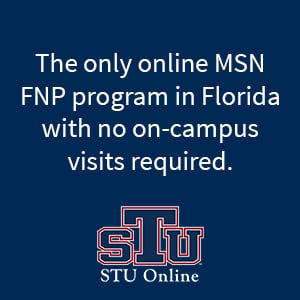
Determining your tuition depends on the price per credit hour and the number of credit hours in your program. Online programs are typically more affordable than on-campus programs, but after addressing tuition, you’ll want to watch out for hybrid and residency options.
The hybrid option combines online courses with on-campus courses, so you still have to drive to campus and plan your schedule accordingly. Residencies require you to travel to campus for two to three days for intensive practice. They’re held once or twice over the course of your program, but you still have rearrange your schedule and make travel or lodging arrangements. That’s another added expense.
St. Thomas University has the only online MSN – FNP program in Florida with no on-campus visits required. It’s not a hybrid format and there aren’t any residencies. Tuition is $566 per credit hour for both in-state and out-of-state students.
Are Online Nursing Students Eligible for Financial Aid?

Federal financial aid, scholarships and tuition reimbursement are all available to students enrolled in an accredited online program. You can fill out the Free Application for Federal Student Aid (FAFSA). You can also check out this great directory of nursing scholarships at Nurse.org.
Tuition reimbursement is offered by many healthcare employers, and it’s probably included in your benefits package. Reimbursements can climb as high as $5,000 per year, but you may be required to remain with the company for a few years. If you’re a new hire, you might need to work for a set period of time before becoming eligible. Since policies and financial support vary, be sure to confirm the details with your HR department or benefits administrator.
What Is a Health Professional Shortage Designation Area and How Does It Affect My Financial Aid?
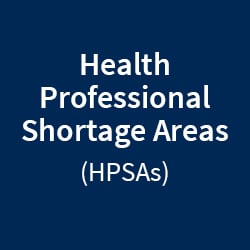
Health Professional Shortage Areas (HPSAs) identify provider shortages in primary care, dentistry and mental health. Designations may refer to a geographic area or patient population. They may also refer to specific healthcare settings, such as state mental hospitals or correctional facilities.
Healthcare providers who work in HSPAs are eligible for loan forgiveness and other financial incentives. In fact, the U.S. Department of Health & Human Services recently dedicated an additional $293 million in funding to increase primary care access in shortage areas. As such, there are several resources available to nurse practitioners. Funding amounts and requirements are set by each program, so you can find the one that works best for your finances and your career goals:
Spotlight on HPSAs: The Rural Healthcare Crisis
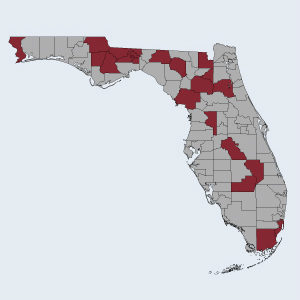
Rural areas and HPSAs in primary care are often one and the same. As the UnitedHealth Group points out, there are almost five times as many primary care shortages in rural counties than urban counties. While the U.S. Census Bureau reports that 19% of the population lives in a rural area, the National Conference of State Legislatures finds that only 11% of all physicians practice in rural settings. Florida is particularly at risk. The state’s Department of Health reveals that there are 277 HPSAs throughout Florida, and 124 are in primary care. In fact, the Kaiser Family Foundation notes that 23% of the state’s population lives in an HPSA.
Nurse practitioners are the most likely solution. According to the Kaiser Family Foundation, NPs manage 80% to 90% of the primary care provided by physicians, and there’s no difference in patient outcomes. That’s why funding options for nurse practitioners in HPSAs are key. The Florida State Nursing Student Loan Forgiveness Program, for instance, offers financial incentives to NPs in high-need areas, such as state-operated healthcare facilities and federally sponsored community health centers. Nurse practitioners enrolled in the program receive as much as $4,000 per year for a maximum of four years. NPs in rural HSPAs can also qualify for the NHSC Rural Community LRP Award, which offers up $100,000 for loan repayment. With these incentives, the number of rural nurse practitioners is on the rise. From 2008 to 2016, Forbes found that the number of NPs in rural settings climbed 43%.
Can I Use My Military Benefits for an Online MSN – FNP Degree?

Military education benefits apply to accredited schools and programs, no matter the format. That’s the case if you’re active duty, a veteran, military spouse or dependent. In fact, the VA maintains a helpful GI Bill Comparison Tool to help you estimate your funding.
St. Thomas University welcomes active duty military members, veterans and their families. If you’d like to access your benefits for the online MSN – FNP, you can get started by calling an enrollment specialist at 855-215-4021.
How Long Does It Take to Graduate From an MSN – FNP Program?
Students in a traditional, on-campus program typically complete their MSN – FNP in two to three years. Students in an accelerated online program can take less time to earn their degree. That’s because traditional courses run for 15 weeks. Accelerated courses are only seven weeks, so you cover the same material in half the time.
Students taking a full course load can complete the accelerated online MSN – FNP at St. Thomas in as few as 18 months. Part-time students can graduate in as few as 28 months. Both timelines, however, depend on your course schedule and clinical rotations. Ultimately, it’s best to work at a pace that’s sustainable for you.
How Much Time Will I Need for My Courses?
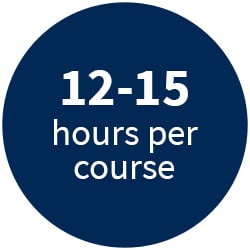
MSN – FNP programs are academically rigorous, and accelerated online courses cover material at a swift pace. That said, you should plan to spend 12 to 15 hours a week on each three-credit course. This includes your “in-class” time, viewing video lectures, completing course modules and participating in discussion forums. The accelerated format does require a few extra hours of study when compared to traditional courses, but you won’t have to commute to campus or rearrange your schedule, so you’re still saving time — and speeding your path to graduation.
Their program offered the kind of flexibility in the coursework that allows me to really focus on my goals. Also, having a great faculty and reputation with some pretty notable alumni were the big factors that made me choose St. Thomas.
– Joe Hogan, graduate, STU online Ed.D. in Educational Leadership – Administration program
Can I Really Keep My Job and Earn My MSN Degree?
Online degrees are designed to work around your schedule. You can manage your courses, clinical hours, work commitments and personal life however you see fit. With 24/7 access, night owls and early birds are equally successful. Some study for a few hours every day. Others catch up on the weekend. Some FNP students work three 12-hour shifts and spend the rest of the week on school work or clinicals. With dedication, you’ll be able to achieve your goal of becoming a family nurse practitioner. Simply stay organized — merge your calendars, plan ahead and study at the pace that works best for you.
Will Employers Care If I Earned My MSN – FNP Degree Online?

U.S. News & World Report notes that online degrees for non-physician roles are increasingly common. That’s especially the case for graduate students, no matter their field of study. Citing attendance records from 2016, the Urban Institute reports that 31% of master’s students were enrolled in fully online programs. Another 21% completed some courses online. With more online grads entering the marketplace, employers are adjusting their hiring practices.
The healthcare industry is ahead of the curve. After interviewing chief nursing officers, hospital presidents and staff recruiters about online degrees, U.S. News & World Report concluded that healthcare employers care about the quality of your education, not its format. Hiring managers regularly employ online grads, but only if they attended an accredited program at a reputable institution. In other words, an accredited online education, combined with in-person clinical rotations, provides you with the same qualifications as traditional MSN – FNP students. And your diploma doesn’t say whether you completed your degree program online or on campus.
How Are Nursing Courses Taught Online?

Simply log in and enter your virtual classroom. From there, you can open or download the syllabus. Once you’re familiar with the course outline and important deadlines, follow clearly labelled links to access reading materials and discussion forums, view video lectures or upload assignments. More often than not, lessons and course modules are arranged in chronological order, so it’s easy to progress through the material. Basically, your online classroom is a bit like your online banking account. It’s tailored to you, there are links for everything you need, and there’s tech support if you run into any issues.
What Kind of Tech Do I Need for Online Courses?
Use your phone or tablet if you want to log in when you’re on the go. Otherwise, a computer and internet access are all you need. It’s a good idea to update your operating system and web browser before your first class. You’ll also want to confirm that your computer can:
- Play videos
- Upload and download files
- View PDFs
- Run presentation software
- Run word processing software
- Open and edit spreadsheets
Do Online Nursing Professors Have Clinical Experience?
Absolutely. Nursing programs are accredited by either the Commission on Collegiate Nursing Education (CCNE) or the Accreditation Commission for Education in Nursing (ACEN). Both require nursing faculty to maintain relevant clinical experience. Professors must keep their skills current by remaining in clinical practice or completing continuing education, and their knowledge must be relevant to the courses they teach.
How Will I Communicate With the Faculty?
Online faculty are available through your virtual classroom, phone and email. Some professors use video chat or text. While they aren’t available 24/7, nursing faculty keep an open dialogue with their students. Most respond within 24 hours. After all, your professors are MSN-prepared nurses (at a minimum), so they know what you’re going through.
Faculty at STU maintain a minimum of 12 office hours per week. Online students are welcome to video chat with professors during office hours (often through Zoom video conferencing). You can email or call anytime.
“The faculty members are very fast to respond any time I have a question.” – Lunel Milien, online MSN – FNP student at St. Thomas University
Which Support Services Are Available to Online Nursing Students?
Support services for online students vary from university to university. Most, however, provide tech support and digital library access. Online MSN – FNP students at STU have access to both. Online tutoring services are available 24 hours a day through Smarthinking. Research and writing assistance are also available. The library is your go-to for all three options, and they’re open from 8 a.m.to 2 a.m. Monday through Thursday, 8 a.m. to 6 p.m. on Friday, 9 a.m. to 5 p.m. on Saturday, and 2 p.m. to 2 a.m. on Sunday. Reach out by phone or email to make a request.
Sources
Article 1
Accreditation Commission for Education in Nursing (ACEN)American Academy of PAs: PAs & NPs: Similarities & Differences
American Association of Nurse Practitioners (AANP):
2017 National Nurse Practitioner Sample Survey ResultsNP Certification Nurse Practitioner Role Grows to More Than 270,000
State Practice Environment
American Journal of Managed Care: Nurse Practitioners Play an Increasing Role in Primary Care
American Nurses Credentialing Center (ANCC): FNP Certification
Association of American Medical Colleges: New Findings Confirm Predictions on Physician Shortage
Centers for Medicare & Medicaid Services: Medicaid Promoting Interoperability Program
Commission on Collegiate Nursing Education (CCNE)
Florida Department of Health: 2017 Physician Workforce Annual Report
Florida State Nursing Student Loan Forgiveness Program
Forbes: Nurse Practitioners Boost Presence By 43% in Rural America
HealthAffairs: Primary Care Workforce Data
Health Resources & Services Administration:
Health Professional Shortage AreasNational Health Service Corps
NHSC Rural Community LRP Award
Nurse Corps
Projecting the Supply and Demand for Primary Care Practitioners Through 2020
State-Level Projections of Supply and Demand for Primary Care Practitioners: 2013-2025
State Loan Repayment Program
Indian Health Service: Loan Repayment Program
Kaiser Family Foundation: Tapping Nurse Practitioners to Meet Rising Demand for Primary Care
Merritt Hawkins: 2017 Survey of Physician Appointment Wait Times
National Certification Corporation (NCC): Women's Health Care Nurse Practitioner
National Conference of State Legislatures: Meeting the Primary Care Needs of Rural America
National Task Force on Quality Nurse Practitioner Education: Criteria for Evaluation of Nurse Practitioner Programs
NerdWallet: Cost of Living Calculator
New York Times: The Disappearing Doctor: How Mega-Mergers Are Changing the Business of Medical Care
Nurse.org: List of Nursing Scholarships
Robert Wood Johnson Foundation: Growing Retail Clinic Industry Employs, Empowers Nurse Practitioners
Scope of Practice Policy: Florida State Profile
Southern Association of Colleges and Schools Commission on Colleges (SACSCOC): Accrediting Standards
UnitedHealth Group: Addressing the Nation's Primary Care Shortage
U.S. Bureau of Labor Statistics:
Fastest Growing OccupationsNurse Anesthetists, Nurse Midwives and Nurse Practitioners
Nurse Practitioners: Occupational Employment and Wages
Physician Assistants
Physician Assistants: Occupational Employment and Wages
U.S. Census Bureau: New Census Data Show Differences Between Urban and Rural Populations
U.S. Department of Education:
Database of Accredited Postsecondary Institutions and ProgramsFree Application for Federal Student Aid (FAFSA)
U.S. Department of Health & Human Services: HHS Awards $293 Million
U.S. Department of Veterans Affairs:
GI Bill Comparison ToolVA Grants Full Practice Authority to Advance Practice Registered Nurses
U.S. News & World Report:
Can Nurse Practitioners Help Ease the Growing Physician Shortage?Nurse Practitioner Overview